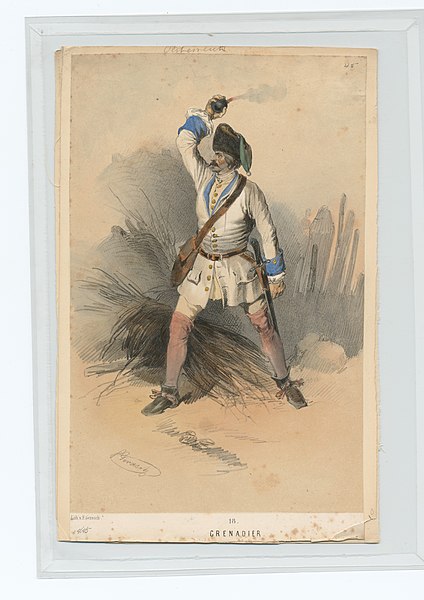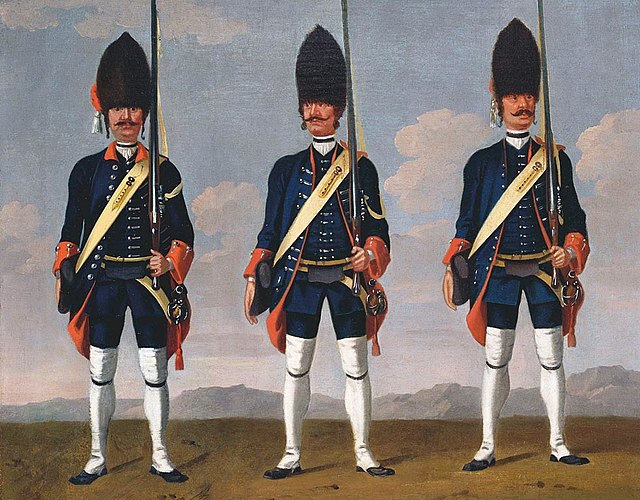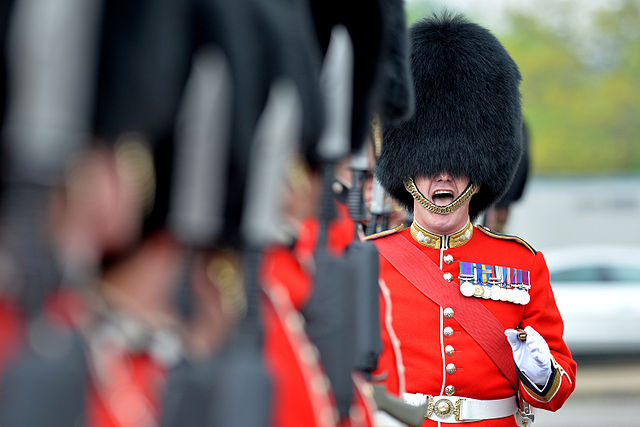A grenadier was historically an assault-specialist soldier who threw hand grenades in siege operation battles. The distinct combat function of the grenadier was established in the mid-17th century, when grenadiers were recruited from among the strongest and largest soldiers. By the 18th century, the grenadier dedicated to throwing hand grenades had become a less necessary specialist, yet in battle, the grenadiers were the physically robust soldiers who led vanguard assaults, such as storming fortifications in the course of siege warfare.
17th century grenadier throwing a hand grenade. The concept of throwing grenades made its way to Europe during the mid-17th century.
Swiss grenadiers from different regiments by the artist David Morier, c.1748, British Royal art collection. Note the mitre caps and the brass match case on the shoulder-belt
The British Army's Guards Division continue to wear the bearskin cap with its full dress uniform, a custom associated with the Grenadier Guards defeat of the French Imperial Guard in 1815.
18th century Prussian grenadier mitre caps (Grenadiermütze).
A grenade is an explosive weapon typically thrown by hand, but can also refer to a shell shot from the muzzle of a rifle or a grenade launcher. A modern hand grenade generally consists of an explosive charge ("filler"), a detonator mechanism, an internal striker to trigger the detonator, an arming safety secured by a transport safety. The user removes the transport safety before throwing, and once the grenade leaves the hand the arming safety gets released, allowing the striker to trigger a primer that ignites a fuze, which burns down to the detonator and explodes the main charge.
Replica WW2 Hand grenades on display
Hand grenades filled with Greek fire; surrounded by caltrops (10th–12th centuries National Historical Museum, Athens, Greece)
Mongolian grenade attack on Japanese during Yuan dynasty
Seven ceramic hand grenades of the 17th Century found in Ingolstadt Germany








